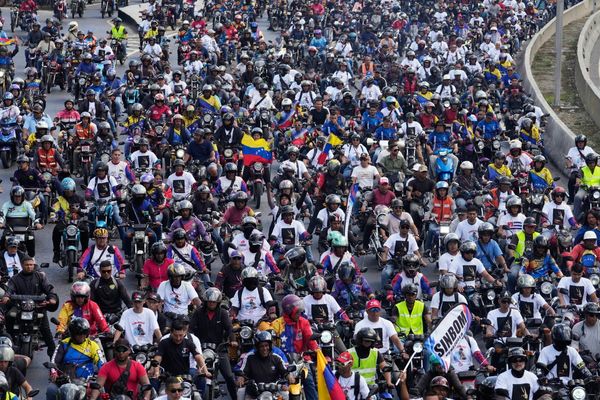
Welcome to another edition of The Crunch!
In this week’s newsletter we have charts on record-breaking heat, the danger and pervasiveness of heatwaves, what Ukraine has lost after two years of Russian bombing and a big roundup of elections around the world.
But first … why is every kid named Oliver?
Oliver is the most popular name in Australia and has been for more than a decade. We’ve updated our baby names datablog with the latest data from the states and territories so you can see the top rankings but also how popular some names have been over time.
Oliver and Noah are also the most popular baby names in England and Wales, suggesting there’s something deeper at play here.
Four charts from the fortnight
***
1. A year of record-breaking global temperatures
May was the warmest May on record, and the twelfth consecutive month where this was true. And some of these months were significantly hotter than the previous record, which is beautifully (and terrifyingly) illustrated by this story in the Financial Times.
Read more here ($).
***
2. More than 1.5 billion people have experienced dangerous heat … just this year.
Heatwaves in south-east Asia, India and elsewhere have been in the news lately. But this story by Harry Stevens in the Washington Post really shows how pervasive, dangerous and increasingly common this has become.
We have also previously covered the dangers of heat in Australia, including that more than half of heatwave deaths are in more disadvantaged areas.
***
3. What Ukraine has lost
Even if the war were to end today, many Ukrainians will have nothing to return to. The New York Times worked with scientists to analyse and visualise the devastation from more than two years of Russian bombardment.
Among the more than 210,000 estimated damaged or destroyed buildings are thousands of homes, hospitals, schools, universities, factories, offices and places of worship. This is on top of the astronomical human cost.
***
4. Nuclear numbers
We featured the visuals on the significant cost of building nuclear reactors in Australia in the last newsletter. ABC Storylab have put together a comprehensive collection of pertinent numbers on this topic, from the carbon dioxide nuclear power plants emit (0), to nuclear’s current share of global energy generation, and how long waste needs to be stored.
Spotlight on … elections!
Reuters has a beautifully illustrated explainer on the more than 1m polling places required for the over 640 million voters in the recently concluded Indian election
The New York Times visualised the Mexican presidential election with some maps, graphics and state breakdowns
Our Guardian colleagues in the UK created a dashboard of the European Union election, including a seat summary and results by country
Guardian UK has also mapped the seats that Labour will need to win the upcoming UK election
Der Spiegel also has a great EU election dashboard showing the votes in Germany (in German)
There have been a few other elections in Europe recently, and there are more on the horizon, you can follow all this on Politico’s daily poll of polls
Off the charts
Many of us were mesmerised by the geomagnetic solar storm that lit up the sky last month. Bloomberg reporter Hayley Warren has done a deep dive into this phenomenon, including this illustration of 92 years of geomagnetic storms.
Perhaps most striking are the hand-drawn sunspot illustrations – going back to one by Galileo.
Sign up
If you would like to receive The Crunch to your email inbox every fortnight, sign up here.







